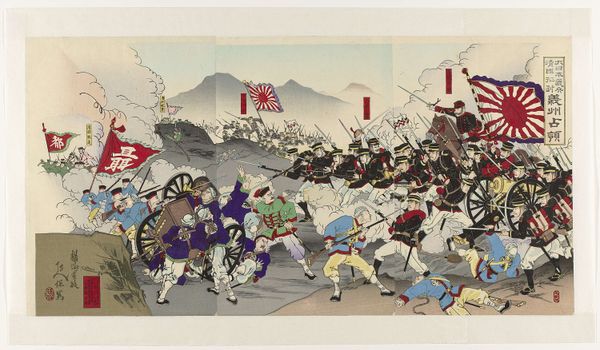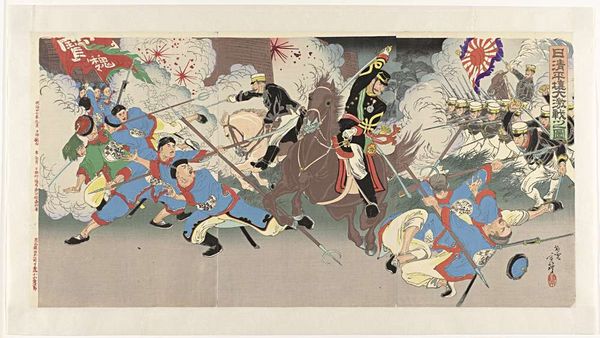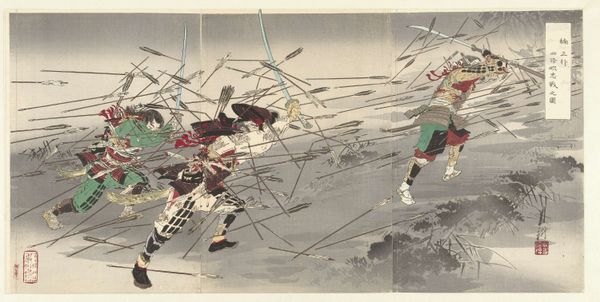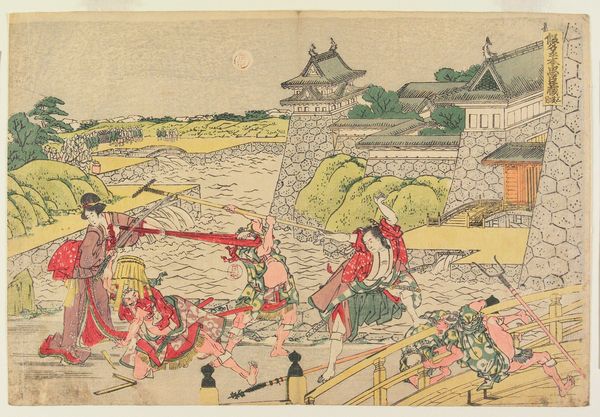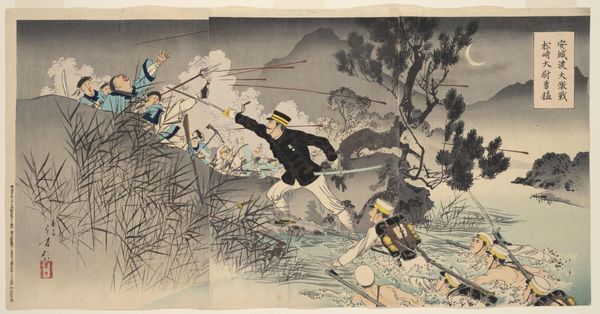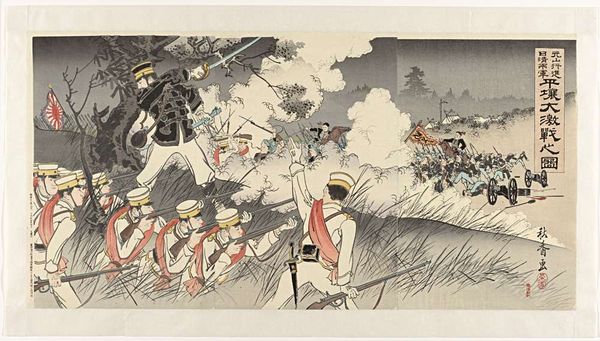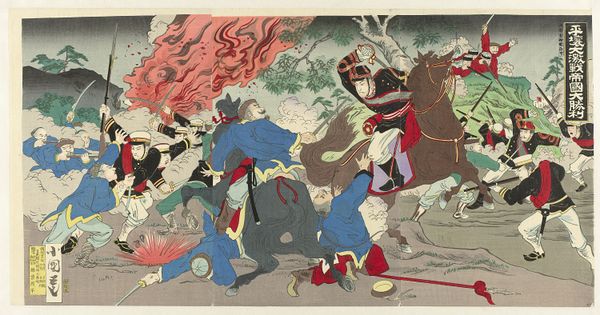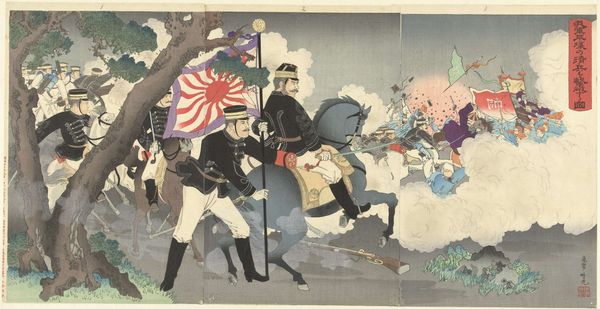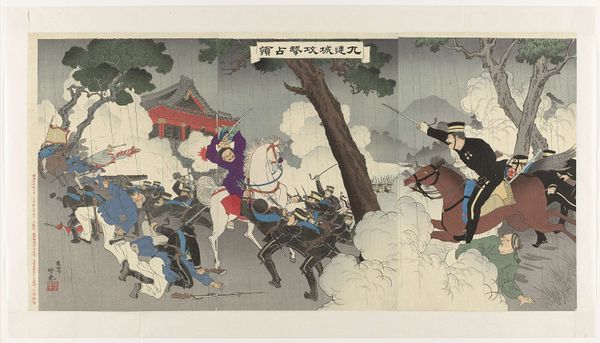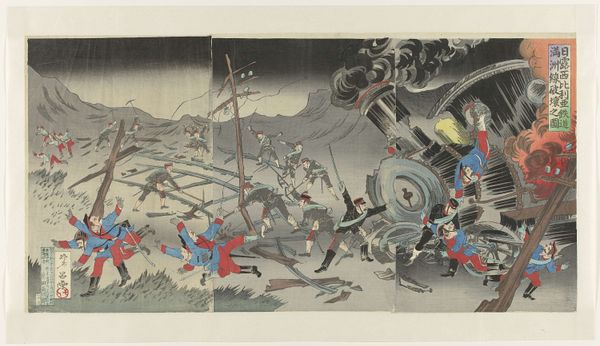
Copyright: Rijks Museum: Open Domain
This is Kobayashi Ikuhide’s woodblock print, “Great Victory of the Japanese Army at Asan in Korea.” Though undated, it was likely made during or shortly after the First Sino-Japanese War of 1894-95. Japanese woodblock prints had a long history of representing military subjects, but this one is distinctive for its propagandistic purpose. Commissioned and circulated in Japan, its explicit purpose was to promote patriotic sentiment and support for the war effort. Notice how the Japanese soldiers are idealized, clean cut, and bravely advancing, while the Chinese forces are shown in disarray. The image, therefore, tells us a great deal about Japanese society and its institutions at the time. Japan was a rapidly modernizing nation, eager to assert itself on the world stage, and the war with China was seen as a crucial test of its newfound strength. Prints like this helped to mobilize public opinion behind the war and to legitimize Japan's imperial ambitions. To understand the print more fully, we can research the history of Japanese printmaking, military history, and the rise of Japanese nationalism. Doing so allows us to grasp the image’s significance within its specific social and institutional context.
Comments
rijksmuseum about 2 years ago
⋮
The Battle of Seonghwan was followed by a victory at the Bay of Asan. While we see a fierce battle, no fighting actually took place at Asan. The Chinese army had already abandoned its position prior to the arrival of the Japanese. These kinds of prints were often designed in Japan on the basis of reports from the front.
Join the conversation
Join millions of artists and users on Artera today and experience the ultimate creative platform.
